By: Joe Gavin | Updated: 2020-10-29 | Comments (6) | Related: > Install and Uninstall
Problem
Installing SQL Server is not overly complicated, but it is helpful to know what to expect before you walk through the installation process. This tip will show you the various screens and options that are part of the install process for SQL Server.
Solution
We'll walk through each of the steps of installing SQL Server 2019 Standard Edition on Windows Server 2019 via the GUI. If you don't have a copy of SQL Server 2019, you can find links to download the Developer Edition and other trial versions on this page.
Once you have the files downloaded, we can begin the installation process.
Install SQL Server 2019
Windows Directory
- To start the install, double click on setup.exe and the first screen will open

SQL Server Installation Center
- Choose 'Installation' from the list on the left side to go to the next screen
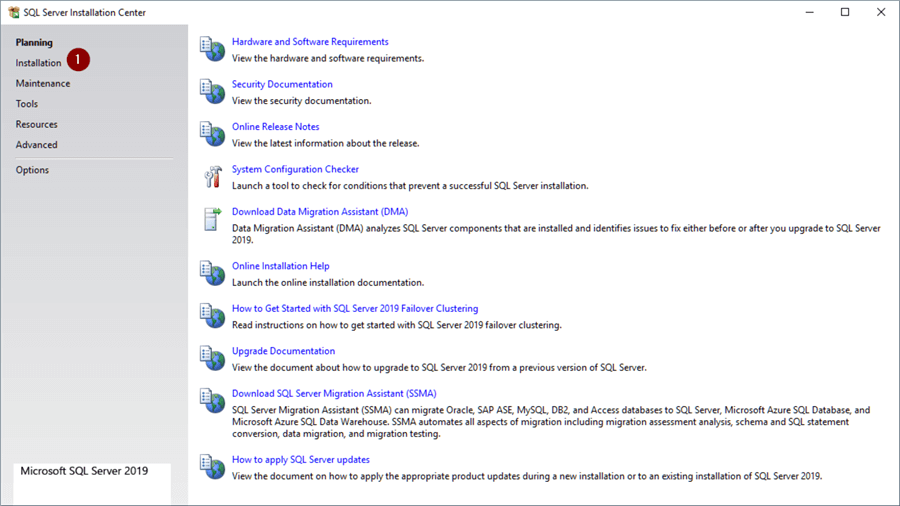
Installation
- Choose 'New SQL Server stand-alone installation or add features to an existing installation' from the list on the right side

Product Key
- Enter SQL Server 2019 product key or use the free edition
- Next
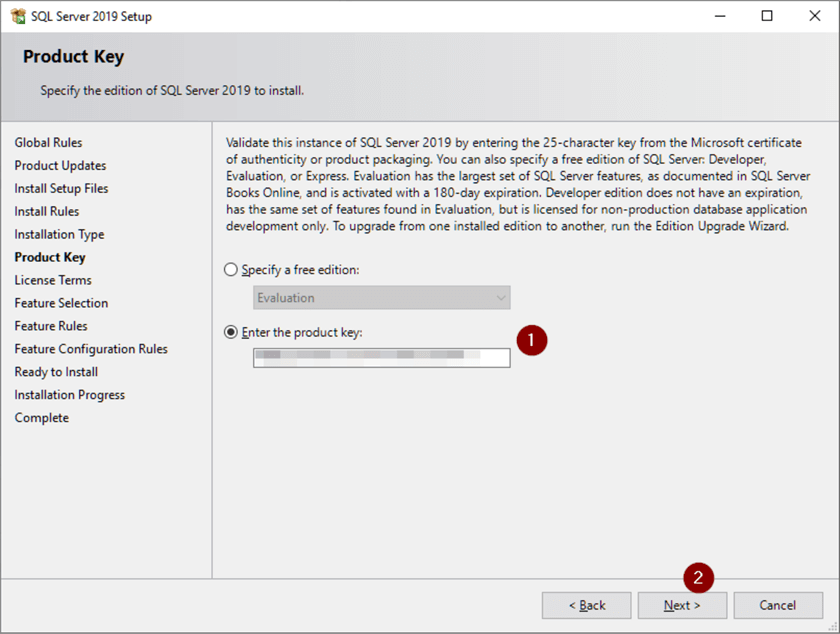
License Terms
- Check 'I accept the license terms...'
- Next
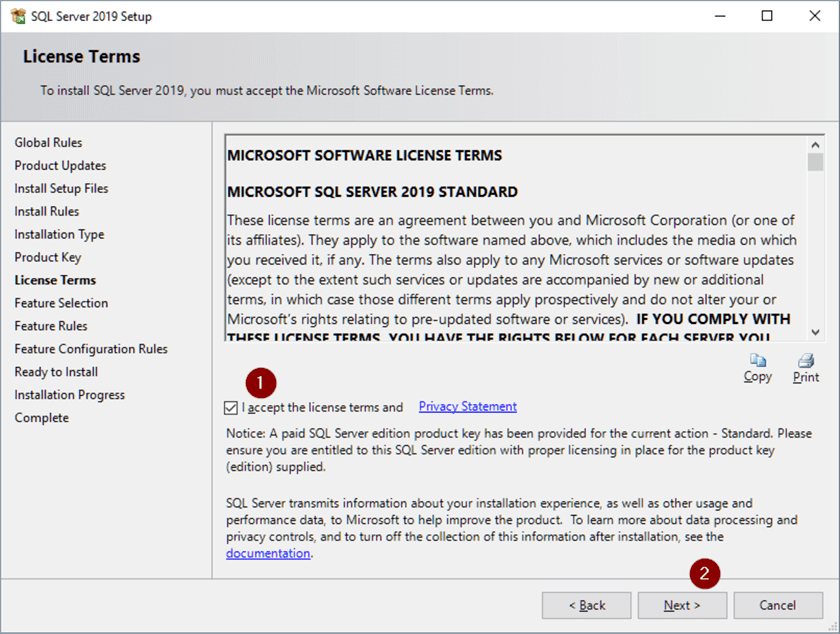
Microsoft Update
- Check 'Use Microsoft Update to check for updates' if you want to automatically check, otherwise leave unchecked
- Next
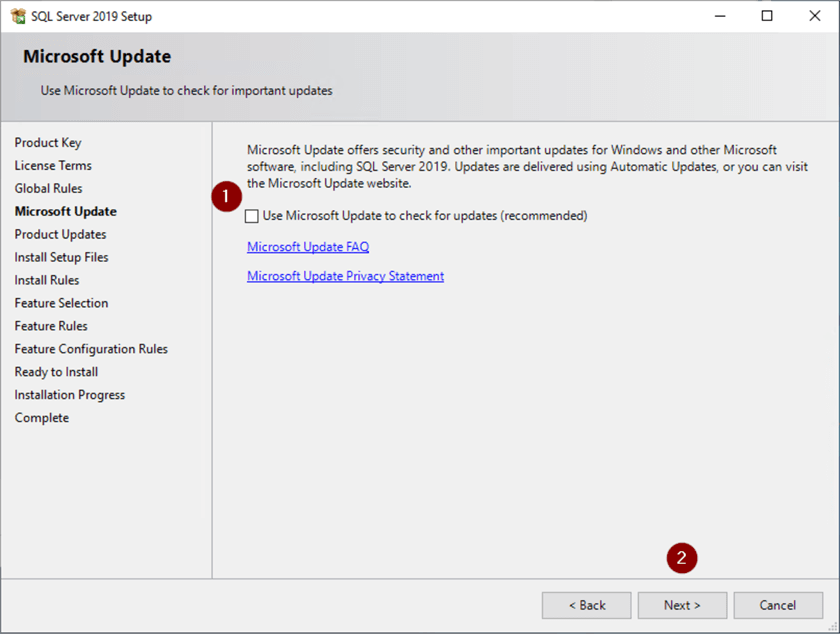
Install Rules
- If there are any issues, click on Warning to get more information. Below the Warning provides a link to what ports need to be open if the Windows Firewall service is running on the machine that you're installing the SQL Server on
- Next
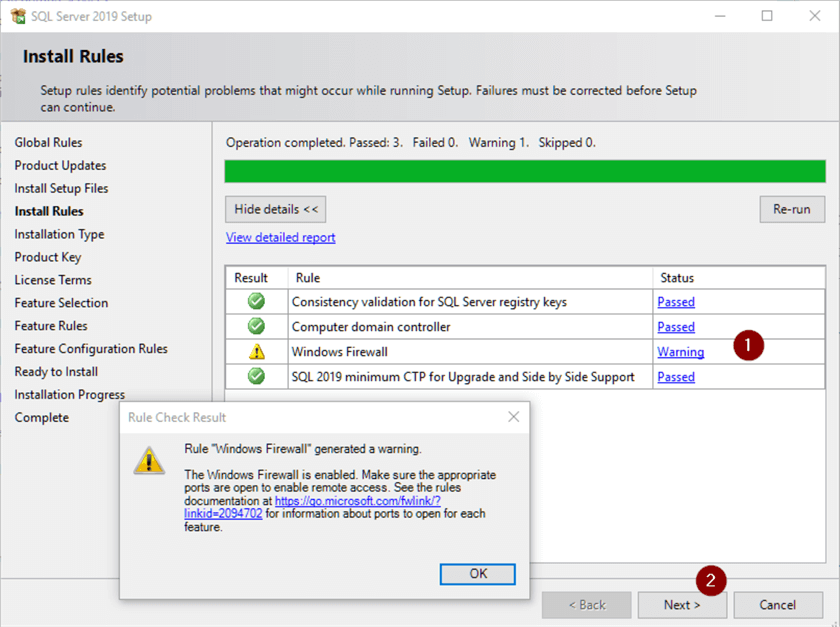
Feature Selection
- Check off 'Database Engine Services' (you would check off any additional features you're installing here but to keep it simple for this tip we'll only be installing the database engine)
- Change drives from the default of C:\ otherwise you'll end up installing everything on C:\
- Next
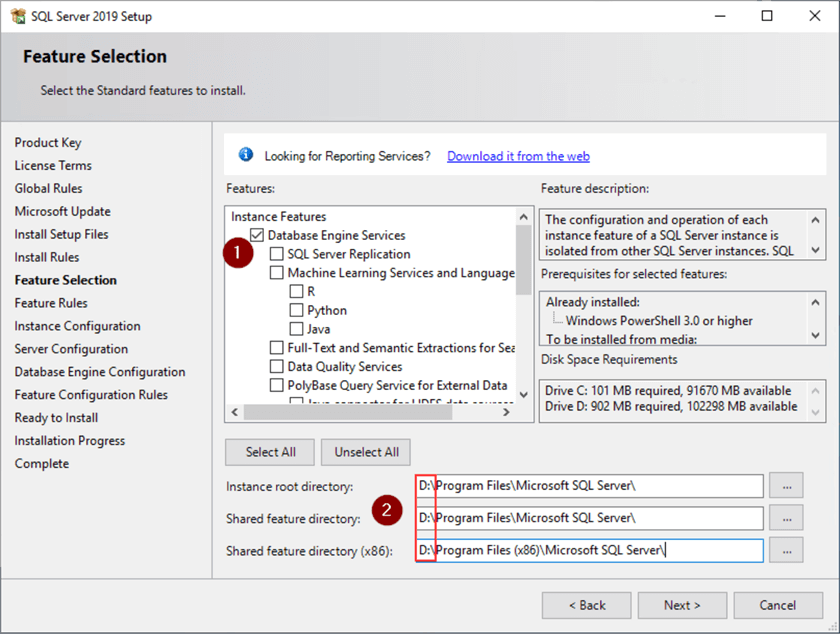
Instance Configuration
- Leave 'Default instance' radio button selected to install as the primary instance
- Next
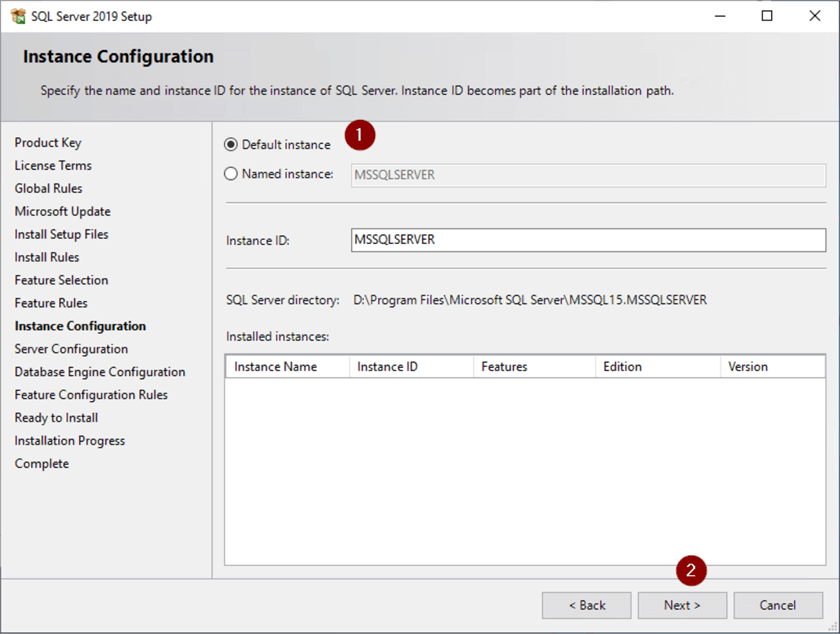
Server Configuration
- Enter Windows Active Directory service account names you want to run the services as
- Set SQL Server SQL Agent and SQL Server Database Engine Startup Type to Automatic to avoid the services not starting on a reboot
- Check on 'Grant Perform Volume Maintenance Task privilege to SQL Server Engine Service' - Instant File Initialization (IFI) speeds up file writes by reclaiming disk space without filling that space with zeros – further information on IFI can be found here: Database Instant File Initialization, here: Check SQL Server Instant File Initialization for all Servers and here: Enable SQL Server Instant File Initialization for Time Saving
- Next

Database Engine Configuration
- Leave the 'Windows authentication mode' radio button checked unless you're sure you need SQL Authentication logins, otherwise select 'Mixed Mode' and enter and confirm strong password for the sa login – if in doubt, changing to 'Mixed Mode' is easily done after the install - additional information on SQL Server authentication can be found here: Choose an Authentication Mode and here: How to check SQL Server Authentication Mode using T SQL and SSMS
- 'Add Current User' to make the current Windows account a SQL Server Administrator – Use 'Add…' to add additional logins to the sysadmin security group judiciously as anyone in this group has full rights over the SQL Server and this should not be granted without thought
- Click 'Data Directories' tab

Data and Backup Directories
- Configure your database and backup directories – ideally these are all on separate drives
- Click TempDB tab
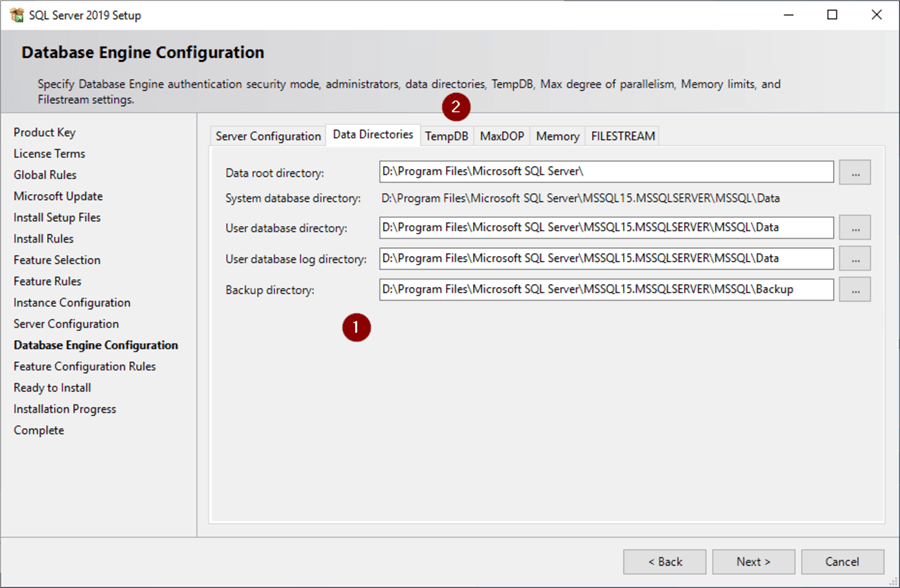
TempDB Configuration
- User defined database file sizes are somewhat dependent on workload and as in previous steps we're installing this on a laptop, but we would normally want Tempdb data and log files on their own volume
- Verify 'Number of files' = number of CPU cores in machine up to 8
- Click MaxDOP tab
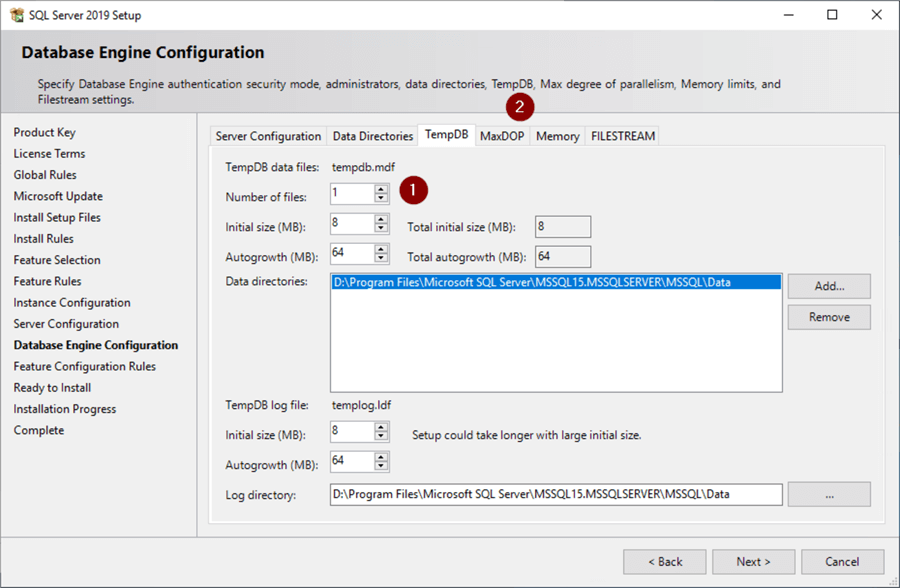
MAXDOP Configuration
- Verify 'Maximum degree of parallelism (MaxDOP)' = number of CPU cores in machine - additional information on MaxDOP can be found here: Configure the max degree of parallelism Server Configuration Option and here: What MAXDOP setting should be used for SQL Server
- Click Memory tab
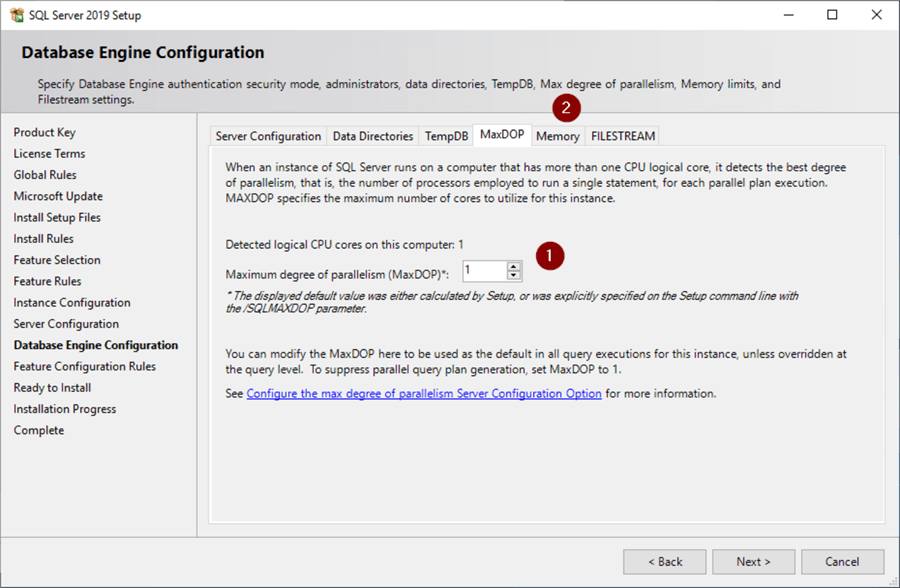
Memory Configuration
- Select 'Recommended' radio button
- The machine we're installing this on only has 5,120 MB (5 GB) of memory and the general rule of thumb is to leave 4096 MB (4 GB) for the operating system – 5,120 MB – 4,096 MB = 1,024 MB so we enter 1024 in the 'Max Server Memory (MB)' box – SQL Server will try to get as much memory as it thinks it needs and setting this limit on it ensures the operating system won't starve for memory
- Check 'Click here to accept the recommended memory configurations for the SQL Server Database Engine' box
- Next
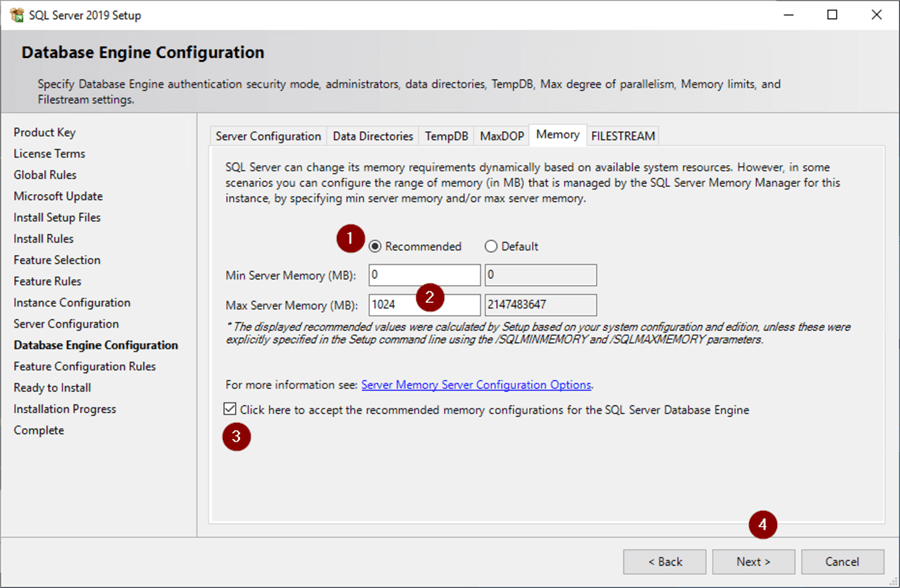
Ready to Install
- Verify configuration
- Install
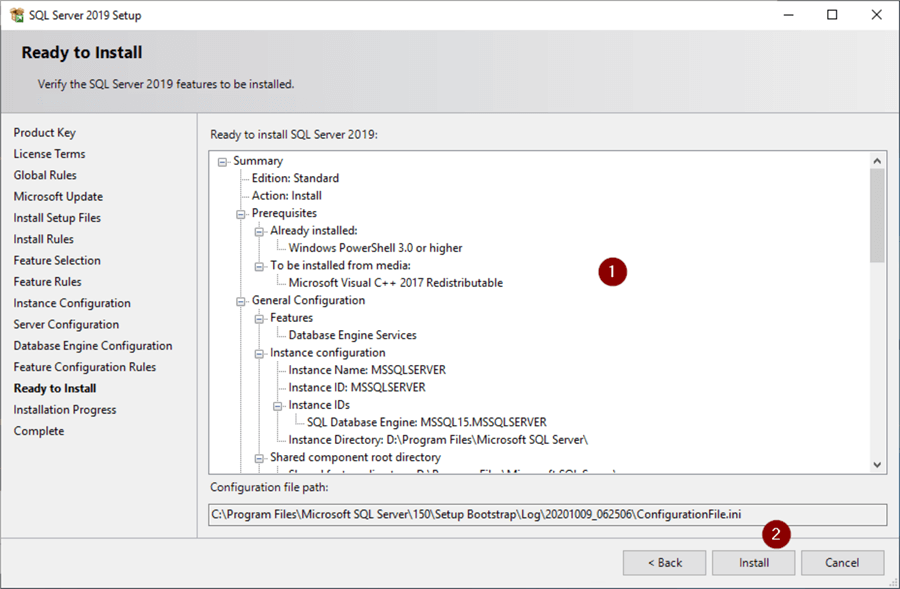
Complete
- Click link to open setup log file and review for any issues
- Close
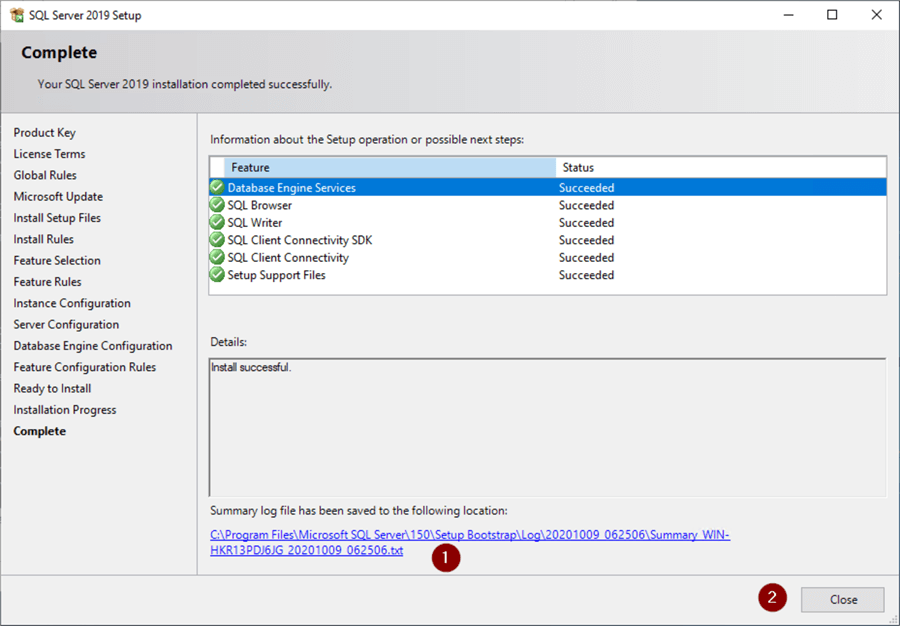
Close SQL Server Installation Center
- Click the X to close setup screen

Apply Latest SQL Server Cumulative Update
At this point we now have an installed and working SQL Server. However, we are only at the 'Release to Manufacturing' (RTM), or basically unpatched patch level. There have been updates since RTM that need to be installed. Previously SQL Server updates consisted of Service Packs (SP) and Cumulative Updates (CU) that had fixes since the latest Service Pack was of SQL Server 2017 there are no more Service Packs, just GDRs (security patches) and CUs applied to the RTM level SQL Server which makes patching a bit easier.
To obtain the latest CU we start here: Latest updates for Microsoft SQL Server and this brings us to the Latest updates for Microsoft SQL Server page. Scrolling down to the 'Latest updates' section we find our version then go over to 'Latest cumulative update' which is CU6 as of this writing and click on the link.
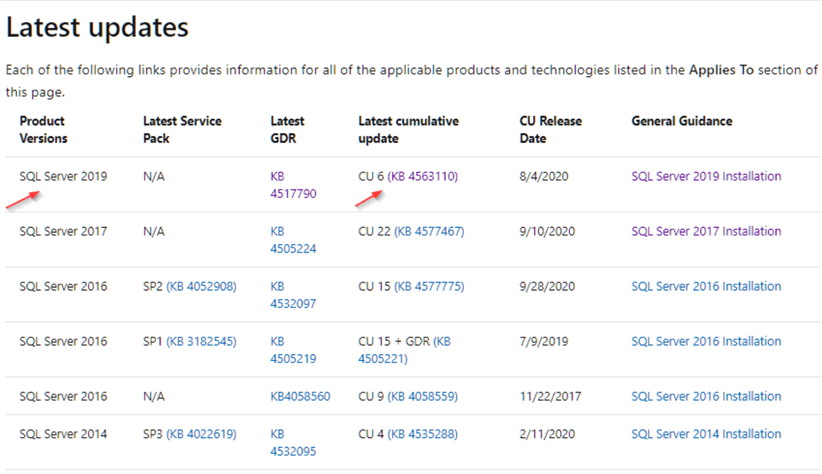
The link brings us to options for obtaining the CU. I chose the Microsoft Download Center by clicking on that link.
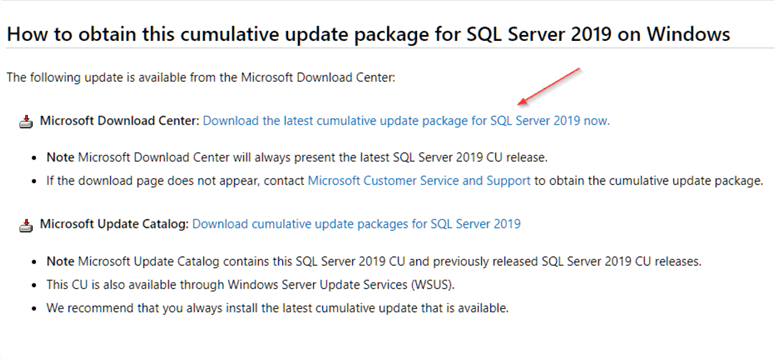
Which in turn brought me to the download page where you click on the Download button.
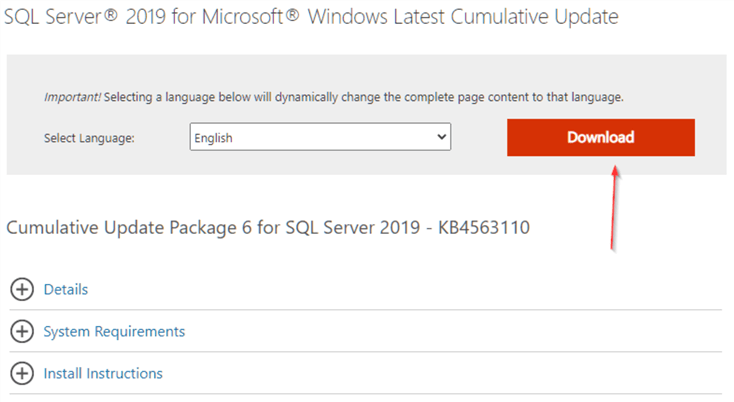
Wait for the download to complete and double click on the click on the downloaded .exe file to start the CU update.
License Terms
- Check off 'I accept the license terms...'
- Click Next
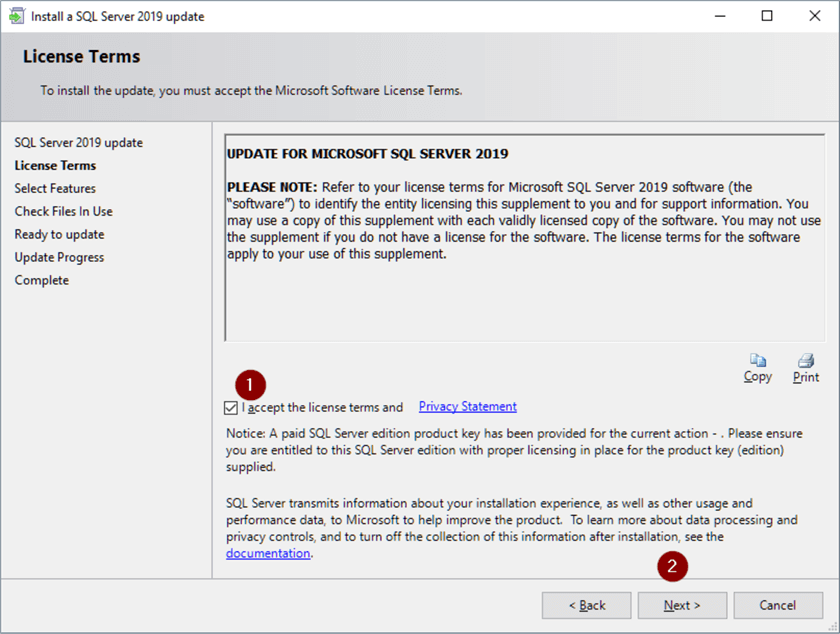
Select Features
- Select Instance you're updating (if there are other instances of the same version of SQL Server that are below the CU level you're applying you would see those here)
- Click Next

Check Files In Use
- Let 'Check Files in Use' complete
- Click Next
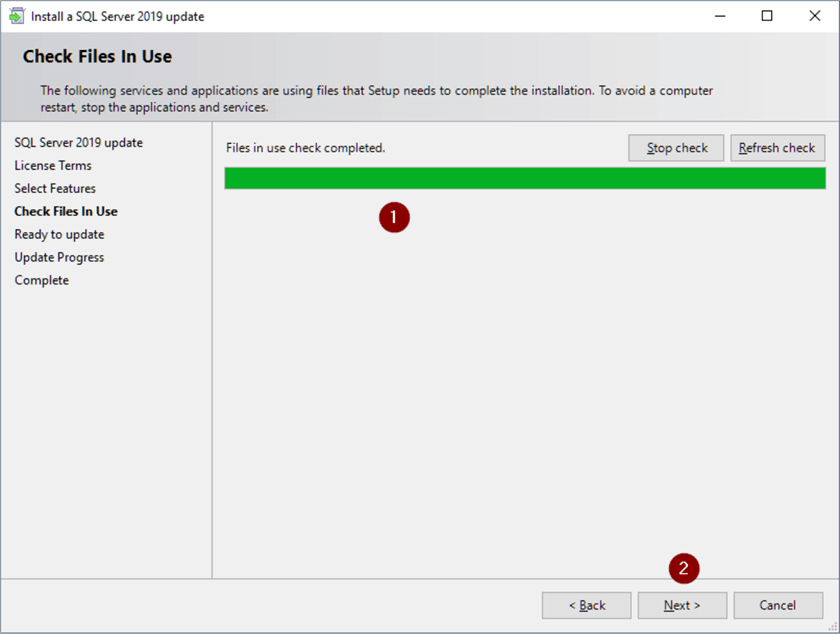
Ready to Update
- Verify configuration
- Click Update
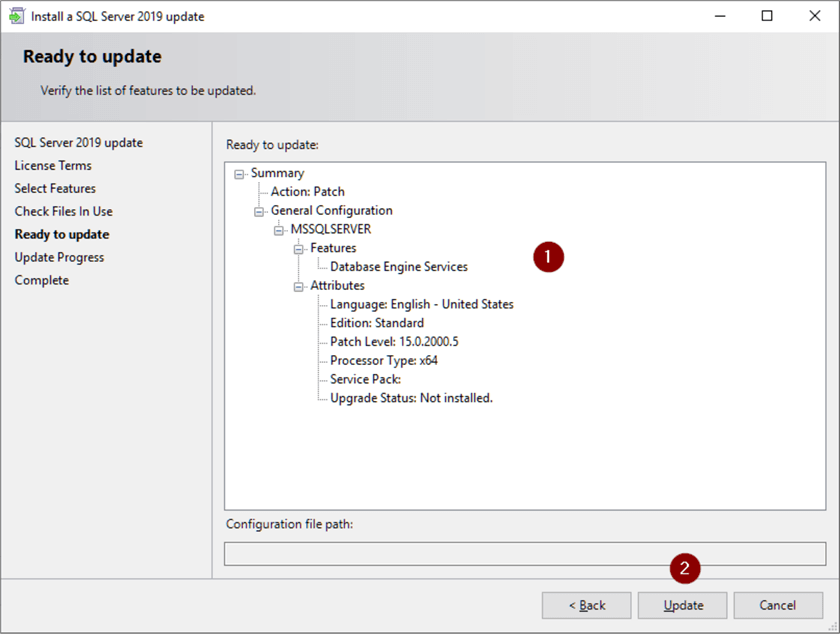
Computer Restart Required
- If you get this box, click OK and reboot after you're done

Complete
- Click link to open setup log file and review for any issues
- Close
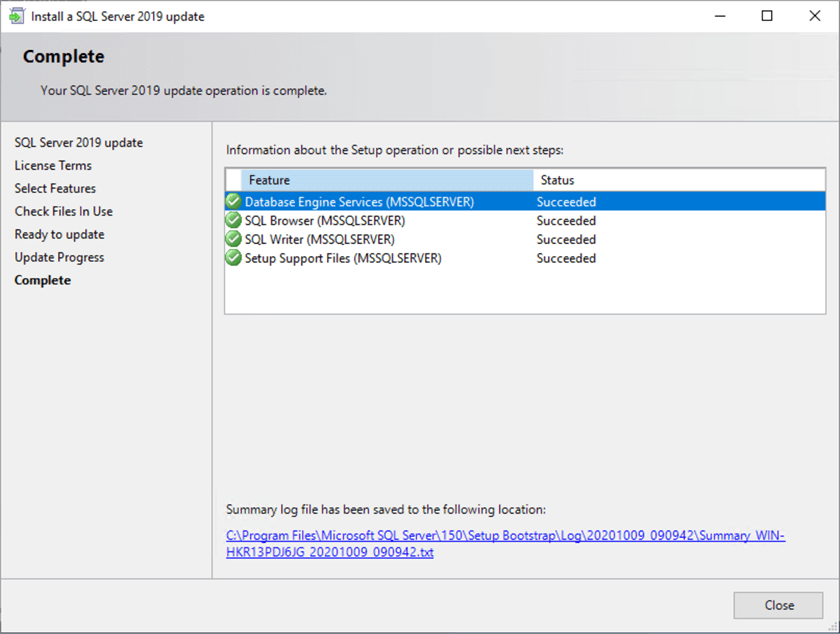
Next Steps
- We've covered a basic install of SQL Server 2019 Standard Edition via the GUI and you can find more installation information here: SQL Server Install and Uninstall Tips
About the author
 Joe Gavin is from the Greater Boston area. He started working with SQL Server and Sybase in 1998 in the financial services industry and has been a SQL Server Database Administrator for a dairy cooperative since 2011. He graduated from Northeastern University in Boston with a Bachelor of Science in Engineering Technology (BSET) degree in Computer Technology. Joe has spoken at the Boston and Providence SQL Saturday events.
Joe Gavin is from the Greater Boston area. He started working with SQL Server and Sybase in 1998 in the financial services industry and has been a SQL Server Database Administrator for a dairy cooperative since 2011. He graduated from Northeastern University in Boston with a Bachelor of Science in Engineering Technology (BSET) degree in Computer Technology. Joe has spoken at the Boston and Providence SQL Saturday events. This author pledges the content of this article is based on professional experience and not AI generated.
View all my tips
Article Last Updated: 2020-10-29






